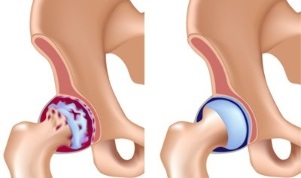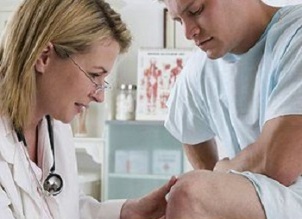These two words are quite similar in comprehension and hearing, so many people who say the words "arthritis" and "osteoarthritis" do not even suspect that these are completely different diseases, although they are associated with joint problems. In fact, both of these diseases are very serious and it is worth knowing what the difference is between arthritis and osteoarthritis, if only to not get into a difficult position in a conversation, because the topic of health is one of the topics "ofeternal "when one person communicates with another.
What is arthritis
Arthritis is a disease that affects most people in middle age (under 40), although there may be exceptions. According to statistics, few people suffer from arthritis, no more than 2% of the total population. However, in essence, arthritis is a severe inflammatory process in which joint problems are only the visible part of the spread inflammation.In arthritis, the main cause of the disease is hidden much deeper than the swelling of the joints, as well as the pain that does not leave the patient even during the overnight rest period (sometimes these pains only intensify). The cause of this inflammation can be either an infection or a malfunction of the immune system. Nodes are not the only organs affected by inflammation. Often a powerful blow falls on such a person’s internal organs as the liver, heart and kidneys. If the problem of arthritis is ignored, then it is very dangerous not only for human health but also for his life.
What is osteoarthritis?

Arthrosis, in general, is an age-related change that a person suffers from, most often near the middle of the second half of life. Very often, the mechanism of development of osteoarthritis is provoked by severe injuries in the form of fractures and joint damage in people over 45 years of age.
Medical statistics say that one in three people over the age of 50 and one in two over the age of seventy suffer from osteoarthritis. In general, about 10% of the inhabitants of our planet suffer from osteoarthritis. Most often, osteoarthritis affects the knees and hip joints in the elderly. In addition, the joints of the toes and ankles may be subject to osteoarthritis.
Reasons for the development of diseases
It is very clear that the causes of each of the diseases are completely different.
For arthritis, these could be:
- Injuries of various origins, to a greater extent, recurrent injuries related to occupational activities can provoke illness;
- Infections such as tuberculosis, fungal infection, SARS, influenza;
- Lack of vitamins and imbalance resulting in metabolism;
- Body overload;
- Disorders of the nervous system;
- Malfunctions of your immune system;
- Having an inherited genetic predisposition to arthritis.
Regarding osteoarthritis, the factors in the development of the disease are:
- Excess weight that affects the functioning of the joints;
- Poor diet;
- Prolonged hypothermia;
- He suffered (perhaps long ago) various types of injuries;
- Body intoxication;
- Metabolic disorders;
- Past infectious diseases;
- Manifestations of autoimmune disruptions;
- Perthes disease, which is manifested by altered blood supply to the femoral head;
- Disorders of the thyroid gland;
Disturbing Symptoms in Arthritis
In arthritis, there is severe pain in the joints, especially when walking or any other physical activity. The joint itself swells visibly and the skin around the joint becomes hot to the touch. Also, the skin may become red. The patient develops a feeling of weakness, it is very difficult for him to make any movements with the affected arm or leg. It is especially difficult in the morning after a night's rest. When pressing the joint, the patient feels severe pain. When performing movements, the joints affected by arthritis can be severely chewed. The patient may have an increased body temperature, and the patient himself may have chills at this time. In acute arthritis, all the symptoms appear simultaneously and suddenly. In chronic arthritis, the symptoms increase slowly and gradually.
Symptoms of osteoarthritis

With osteoarthritis, doctors distinguish four main symptoms of the disease:
- Joint pain.The pain is strong and sharp. It starts the moment the movement starts and calms down with the transition to a state of rest. At night, a person has virtually no pain, and after choosing a comfortable position, the patient can sleep soundly. Feelings of pain increase as the disease progresses. The pain is also worse in cold and rainy weather;
- Pulling joints.Due to the reduced freedom and softness of the bone rotation, a loud crack is heard in the joints. Experts distinguish arthritic crumb from a kind of "dry" sound. The more the disease develops, the stronger the joint crisis. A feature of chewing in osteoarthritis is that chewing is almost always accompanied by pain;
- Limiting the mobility of the wrist itself.With osteoarthritis, in many cases the limb is immobile. This is due to the fact that bone growth occurs and the joint space narrows, which leads first to a restriction of mobility, and then to a complete immobilization of the joint;
- Deformation of the joints.As a rule, this symptom is characteristic of the late stages of osteoarthritis development, when osteophytes grow.
Clinical differences between arthritis and osteoarthritis
It is quite clear that arthritis and osteoarthritis have different genesis as diseases. If arthritis is the result of a malfunction of the immune system or an infectious disease, then osteoarthritis refers more to diseases that come from the aging process of the body. Therefore, based on this, the clinical picture of arthritis and osteoarthritis manifestations will also change.
Arthritis of the fingers

So with arthritis of the fingers, the patient has severe pain that does not subside during rest and at rest. In addition, the skin around the affected joints becomes red.
Arthritis can affect a different number of joints from one (monoarthritis) to several (polyarthritis). The joints are swollen. Reaction to ankle compression can be sharp pain.
As for chewing on the joint, it may or may not be present.
Osteoarthritis of the fingers
Occurs more often in the elderly, and in women, osteoarthritis occurs about 10 times more often than in the stronger sex. The main site of localization is the joints between the phalanges of the fingers.
Every movement of the fingers causes unpleasant pain to the patient. However, at rest, the pain is virtually absent. The joints are swollen and there may be redness of the skin around the affected joint. Arthrosis is always accompanied by "dry" chewing on the joints.
The same picture is observed in cases of arthritis and osteoarthritis of the finger joints.
Treatment with chondroprotectors
In arthritis and osteoarthritis, cartilage is destroyed due to contact with the hard and rough surface of the bone. As a result, the process of synovial fluid production is interrupted, the cartilage is deprived of food and the joint is deprived of the lubrication necessary for its normal functioning.
Chondroprotector prevents these pathological processes. The active substance of chondroprotectors is glucosamine and chondroitin sulfate. Dosage forms for the release of these substances are different and can be used by doctors depending on the situation.
Today, chondroprotectors are produced in the form of:
- Solution for injection;
- Tablet;
- Creams, oils and gels.

Chondroprotective treatment should begin before the cartilage has completely collapsed. Unfortunately, such a treatment is absolutely useless when the cartilage is destroyed. The next thing to keep in mind when treating with chondroprotectors is the duration of the course of treatment. The fact is that the cartilage restoration process is quite long and the minimum course of treatment should be six months, but practice shows that treatment with chondroprotectors lasts on average one and a half to two years. If the restoration is not completely completed, cartilage destruction resumes. As a rule, chondroprotectors do not have any side effects on the patient's body, the maximum that is observed in practice is mild intestinal disorders. The only complication may arise in the treatment of chondroprotectors in people suffering from diabetes mellitus. When treating them, the insulin dose must be calculated correctly, as chondroprotectants contain glucose. And also the use of chondroprotector is not recommended during pregnancy, as well as for the treatment of children.
Today in the arsenal of doctors dealing with arthritis and osteoarthritis problems, there are a number of effective remedies for treatment.
Treatment with chondroprotectors should be started under the supervision of a doctor, otherwise the treatment may be ineffective.
Treatment with folk remedies
For arthritis, traditional medicine recommends some effective recipes:
- Uthull molle.This substance is added to water (1 teaspoon per glass of water). The resulting solution is drunk before meals;
- Potato compression.Get green tubers for compression.
Wash, cut into pieces without peeling. Potatoes are heated in water at a temperature of 38 degrees. A compress is then applied to the injured area. The potato layer should be 1, 5 - 2 centimeters. It is necessary to bet at night. The course of treatment in this way is seven to ten days.
Ointments in the treatment of arthritis and osteoarthritis
In the early stages of the development of arthritis as well as osteoarthritis, the use of oils for external use can help treat the patient. A specialist will choose the right medicine based on the results of the examination.

























